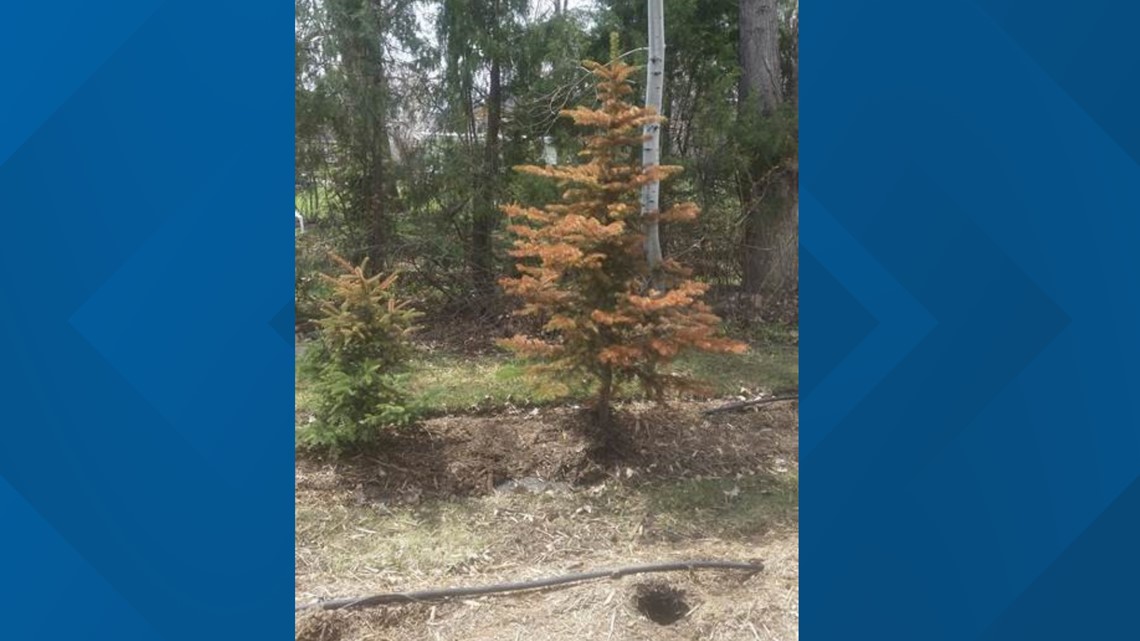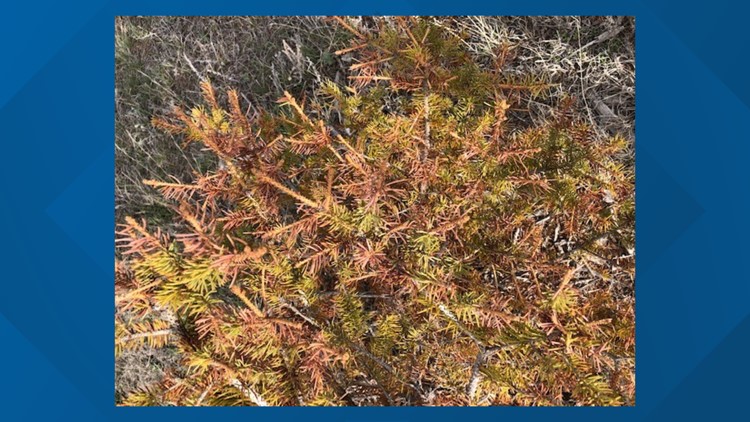FRANKTOWN, Colo. — A series of weather extremes damaged numerous species of evergreen trees including some ponderosa pines and spruce trees in Douglas and Elbert Counties, according to the Colorado State Forest Service (CSFS).
The agency said a cold snap in October coupled with last week’s extreme temperature fluctuations injured trees in places like Castle Rock, Franktown, Parker, Elizabeth, and Kiowa.
With warm weather preceding winter last year, the trees did not have the chance to transition into dormancy before freezing occurred. Large shifts in outside temperatures last week exacerbated the damage, according to the agency.
Damaged pine and spruce trees may appear grizzled and possess white or straw-colored foliage, referred to as “winter burn.”
Other symptoms may include the tips of needles appearing rust-colored while the base of the needles remains green.
While most sightings of pines exhibiting these frost damage symptoms have occurred in Douglas and Elbert county communities, trees in other areas of Colorado, including the eastern plains, may be experiencing this damage as well.
Little can be done for trees that have sustained winter burn damage, according to Meg Halford, a forester in the Colorado State Forest Service’s Franktown Field Office.


“The buds on these frost-injured trees may have survived, and they may produce new growth this spring,” she said. “Don’t count them out just yet.”
The CSFS recommends that residents monitor the foliage of their trees for color changes or a brittle appearance. Along with watching for these common frost injuries to their trees, residents should also frequently water their trees to avoid drought-like conditions throughout the spring, summer and fall in the absence of natural moisture from snow and rain.
Trees require 10 gallons of water per inch of tree stem (measured 4.5 feet up the tree from the soil) per week during the growing season.
Overly dry trees can become highly susceptible to root and branch die-off, as well as more prone to insects and diseases. The best time for watering is early morning or evening to avoid the hottest times of the day, when the moisture can be quickly wicked from the ground and trees.
When doing this, residents should soak the entire base of the tree slowly, to ensure deep soil penetration, and repeat this process as necessary until abundant spring rains begin to fall.
Monitoring trees for cold weather damage and keeping up with watering should maximize the trees’ health and vigor as they come out of dormancy in the spring and summer months.
SUGGESTED VIDEOS: Local stories from 9NEWS



